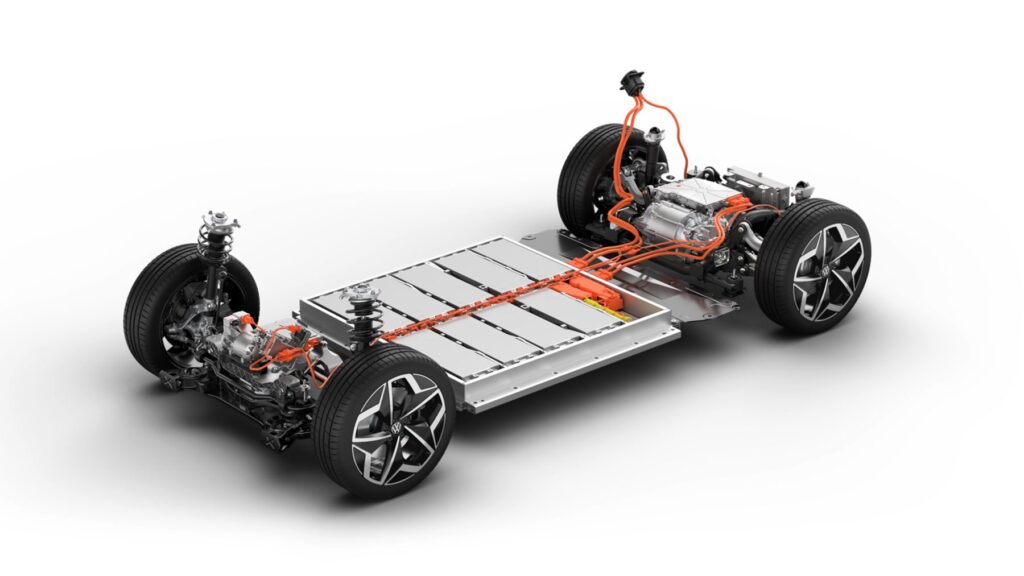There are many types of electric car batteries that can be used. The types depend on the car system. The most popular and most widely used electric car battery is lithium-ion. The battery is one of the important components in an electric car system.
In an electric car or Battery Electric Vehicle (BEV), the battery is the only source of life because only the electrical energy stored in the battery is the only source of energy for driving the car. The following are types of electric car batteries complete with their characteristics.
1. Lithium-ion (Li-ion)
The most widely used type of electric car battery is the lithium-ion battery. This battery is also widely used in portable electronic equipment such as cellphones and laptops. The difference is, compared to other portable electronic equipment, the scale of the physical capacity and size of Li-ion in electric cars is much larger.
Li-ion batteries have a very high power to weight ratio. This battery has high energy efficiency with excellent high temperature performance. Li-ion batteries also have a higher energy-to-weight ratio.
Lithium-ion batteries charge faster, last longer, and have a higher power density for longer battery life in a lighter package. The smaller the weight of the battery, the longer the distance an electric car can travel on a single charge and it does not contain substances harmful to humans.
BEV and PHEV cars are the types of electric cars that use the most batteries of this type.
2. Nickel-metal hydride (NiMH)
The most obvious difference between Li-ion and NiMH batteries is the material used to store the power. Lithium-ion batteries are made of highly reactive carbon and lithium, which can store a lot of energy. Meanwhile, NiMH batteries use hydrogen to store energy, with nickel and other metals (such as titanium) keeping the cap on the hydrogen ions. NiMH batteries are mostly used by hybrid electric vehicles (HEV).
This type of electric car battery does not get power from the outside. Charging this battery depends on engine speed, wheels and regenerative braking. The main advantage of Ni-MH batteries is that they have a longer life cycle or service life than lithium-ion batteries. In addition, Ni-MH batteries are also relatively easy to recycle because they contain only a few materials that are toxic to the environment.
The biggest minus of NiMH batteries is that they are relatively more expensive, have a high self-discharge rate, and generate significant heat. These shortcomings make NiMH less effective as a battery for electric cars whose batteries must be recharged from outside the system. That is why this electric car battery is most widely applied to hybrid cars.
3. Lead-acid
SLA (lead-acid) batteries are the oldest rechargeable batteries. Compared to lithium and NiMH batteries, these batteries do not have a competitive capacity and are much heavier, but they are relatively cheap and safe. There are currently large capacity SLA electric car batteries under development, but now SLA batteries are only used by commercial vehicles as a secondary storage system.
4. Solid state
This battery removes the heavy liquid electrolyte that lives inside the lithium-ion battery. The replacement is a solid electrolyte which can be glass, ceramic, or other materials. The overall structure of a solid-state battery is very similar to that of a traditional lithium-ion battery, but without liquid the battery can be much denser and compact. Solid-state batteries discharge energy and recharge in a similar way to traditional lithium-ion. Solid-state batteries are nothing new, but their use in the automobile industry is recent.
This type of battery has been used for years in small devices such as pacemakers, wearables, and RFID. Expectations about the ability of solid-state batteries to improve electric vehicles are also very high. The use of solid electrolytes can save capacity because the footprint is smaller than traditional liquids. At the same capacity that lithium-ion batteries require for vehicles, solid-state batteries have between two and 10 times as much capacity.
5. Nickel-cadmium
“Ni-Cd” accumulators have many advantages, such as significant storage density and a lifetime of about 500 to 1,000 charge cycles. However, these batteries are quite heavy and are highly susceptible to memory effects, a physical phenomenon of reduced battery performance when subjected to a partial “discharge” cycle. Used for the production of electric vehicles in the 90s, Ni-Cd batteries are now banned due to the toxicity of cadmium.
6. Ultracapacitor
Ultracapacitor batteries differ from other electrochemical batteries in that they store a polarized liquid between the electrodes and the electrolyte. As the surface area of the liquid increases, the energy storage capacity also increases. Like SLA batteries, ultracapacitor batteries are particularly suitable as secondary storage devices in electric vehicles as they help electrochemical batteries increase their load levels. In addition, the ultracapacitor can also provide extra power for electric vehicles during regenerative acceleration and braking.
